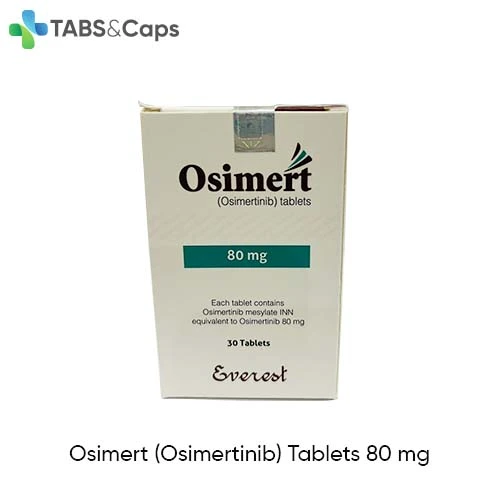Our Happy Clients


The use of Osimert is indicated for the treatment of patients with metastatic non-small cell lung cancer (NSCLC) whose tumors either have one or both of the following features:
It is important that these mutations are detected using a FDA-approved test. There are also indications for the use of Osimert for patients who have metastatic EGFR tyrosine kinase inhibitor (TKI) therapy-positive NSCLC, as determined by an FDA-approved test, after the disease has progressed following EGFR TKI therapy.
As a kinase inhibitor of the epidermal growth factor receptor (EGFR), osimertinib inhibits the actions of the receptor. At approximately 9 times lower concentrations than it does to wild-type EGFR, it binds irreversibly to mutant forms of EGFR (T790M, L858R, and exon 19 deletion) at exactly the same levels as it binds to wild-type EGFR. This study showed significant anti-tumor activity against EGFR mutant lines in cultured cells and against EGFR amplification-positive lines in animal tumor models that harbored EGFR mutations as well as wild-type EGFR mutations, but to a lesser extent.
It has been observed that two pharmacologically active metabolites, AZ7550 and AZ5104, are produced in the body after oral administration of Osimertinib at a level equivalent to approximately 10% that of the parent compound. The potency of AZ7550 is similar to that of Osimertinib, while the potency of AZ5104 is about eight times greater for exon 19 deletions, T790M mutants, and wild type EGFR (about fifteen times higher). Additionally, Osimertinib is able to inhibit the activity of HER2, HER3, HER4, ACK1, and BLK at concentrations clinically relevant for the treatment of breast cancer.
Osimertinib exhibits dose-proportional pharmacokinetics over a 20 to 240 mg dose range. When taken orally once daily, it reaches steady-state exposure after 15 days, accumulating approximately three-fold. The C_max to C_min ratio at steady-state is approximately 1.6-fold.
Absorption: The median time to reach C_max is 6 hours (range 3-24 hours). A high-fat, high-calorie meal influences the pharmacokinetics of Osimertinib.
Distribution: The mean volume of distribution at steady-state (Vss/F) is 986 L. Osimertinib binds to plasma proteins at a rate of 95%.
Elimination: Osimertinib has a mean half-life of 48 hours and an oral clearance (CL/F) of 14.2 L/h.
Metabolism: The primary metabolic pathways include oxidation (mainly via CYP3A) and dealkylation. Metabolites AZ7550 and AZ5104 each represent about 10% of Osimertinib's exposure at steady-state.
Excretion: It is primarily eliminated via feces (68%) and to a lesser extent through urine (14%). Approximately 2% of the drug is excreted unchanged.
The recommended dose is an 80 mg tablet taken once daily until disease progression or unacceptable toxicity occurs. Osimertinib can be taken with or without food. If a dose is missed, resume the next dose as scheduled without making up for the missed dose.
For administration:
Avoid crushing, heating, or ultrasonicating the tablet during preparation.
Product Delivery is a customer-centric approach to defining.
Product Delivery is a customer-centric approach to defining.
Product Delivery is a customer-centric approach to defining.